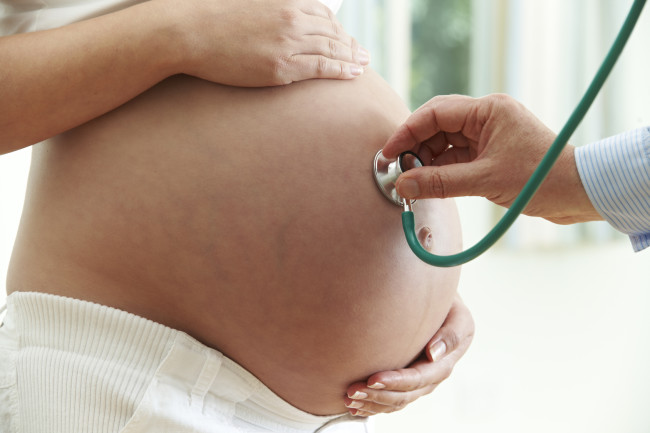Angela is heartbroken. Her sister, Janet, went to her prenatal appointment just two weeks before her due date after a completely normal pregnancy. There was no foetal heartbeat.
The baby had been entirely healthy up until the previous day when Janet noticed he was less active than usual. An ultrasound revealed the worst news possible. Her baby had died. Her labour was induced and she delivered a perfect little boy with no obvious clues of what caused his death. The cord was not knotted or wrapped around his neck or body. His placenta appeared normal and there were no signs of infection.
Angela emailed to find out what happened. “Why did my nephew die?”
The short answer Angela is, “I don’t know.” Without clear indications like a knotted cord or visibly abnormal placenta or signs of infection, it’s often impossible to know an exact cause of death.
In somewhere between 25 to 60% of cases, the cause of death is undeterminable. Unless your medical providers can diagnose a precise problem, I suspect that is something you and your family will struggle with for a long time. Not knowing complicates grief that’s already so deep it can feel insurmountable.
What do we know about foetal demise?
Foetal demise is the medical term for a baby older than 20 weeks gestation who dies in the uterus before birth. It only happens in about six out of every 1 000 live births. You know I like to flip statistics, so that means that it occurs in only .06 % of all pregnancies and that in 99,4% of cases, babies do NOT die.
It’s thought that about 65% of demises have something to do with an abnormal placenta. The placenta forms a complicated web of blood vessels and tissues as it develops and throughout pregnancy that connect mom and baby. If something prevents healthy development or destroys vessels and tissues along the way, the placenta can’t support baby’s life the way it intended. Sometimes, it doesn’t attach properly to the uterine lining, its’ blood vessels don’t function adequately or there’s some other anomaly that reduces circulation and nutrients to baby and removal of waste products from the uterus.
In 99,4% of cases, babies do NOT die.
What causes the placenta to malfunction?
Most of the time we don’t know. Sometimes, however, it’s attributed to maternal health issues like;
- Obesity
- Smoking
- Drug abuse
- Uterine scar tissue from infection or surgeries (like previous c-sections)
- Diabetes
- Hypertension and other issues
Sometimes, it has to do with foetal complications like;
- Infection
- Multiple babies (twins, triplets, etc.)
- Genetic abnormalities
Without more information, there’s no way for me to know why Angela’s nephew died, but I do know that foetal deaths are fairly rare, always tragic, hard to recover from but not often repeated within a family.
What can women do to make sure they’re in the healthy 99.4%?
Do everything you can to grow a healthy placenta. That means no smoking or drugs, lots of good healthy exercise, an excellent diet and good prenatal care. But, since we don’t always know in advance how healthy a placenta is, it’s essential that mothers pay close attention to how they feel and how often they notice their baby’s movements.
A simple procedure called a “kick count” can make the difference between life and death.
Kick counts only work after your baby is 25 weeks gestation or more. To perform a kick count, have a glass of water or a snack and either sit or lie down. Then, time how long it takes to count ten movements, kicks, rolls or flutters. Ideally, you want to reach 10 in less than two hours. If you feel ten kicks in a few minutes – great! You’re done. If you practice kick counts regularly, you’ll become familiar with your baby’s activity patterns. If it takes longer than two hours to feel ten or you notice a sharp decline in activity, call your midwife or doctor and let them know. They might advise that you come in to their office or go to the hospital maternity unit for further evaluation.
Jeanne Faulkner
Latest posts by Jeanne Faulkner (see all)
- A pregnancy that isn’t part of the plan - September 18, 2014
- When a baby dies before birth - September 9, 2014
- Addressing the dangers of childbirth - September 1, 2014
-
No Comments" href="https://all4baby.co.za/pregnancy/second-trimester/2095/future-ultrasound-colour-photos-4d-imagery/">

The future of ultrasound: Colour photos and 4D imagery
-
No Comments" href="https://all4baby.co.za/pregnancy/first-trimester/2028/pregnancy-isnt-part-plan/">

A pregnancy that isn’t part of the plan
-
No Comments" href="https://all4baby.co.za/birth/labour-delivery/1858/addressing-dangers-childbirth/">

Addressing the dangers of childbirth
-
No Comments" href="https://all4baby.co.za/pregnancy/pregnancy-symptoms/1721/pregnancy-discharge-low-whats-going-low/">

Pregnancy discharge: The low down on what’s going on down low


 Saving...
Saving...